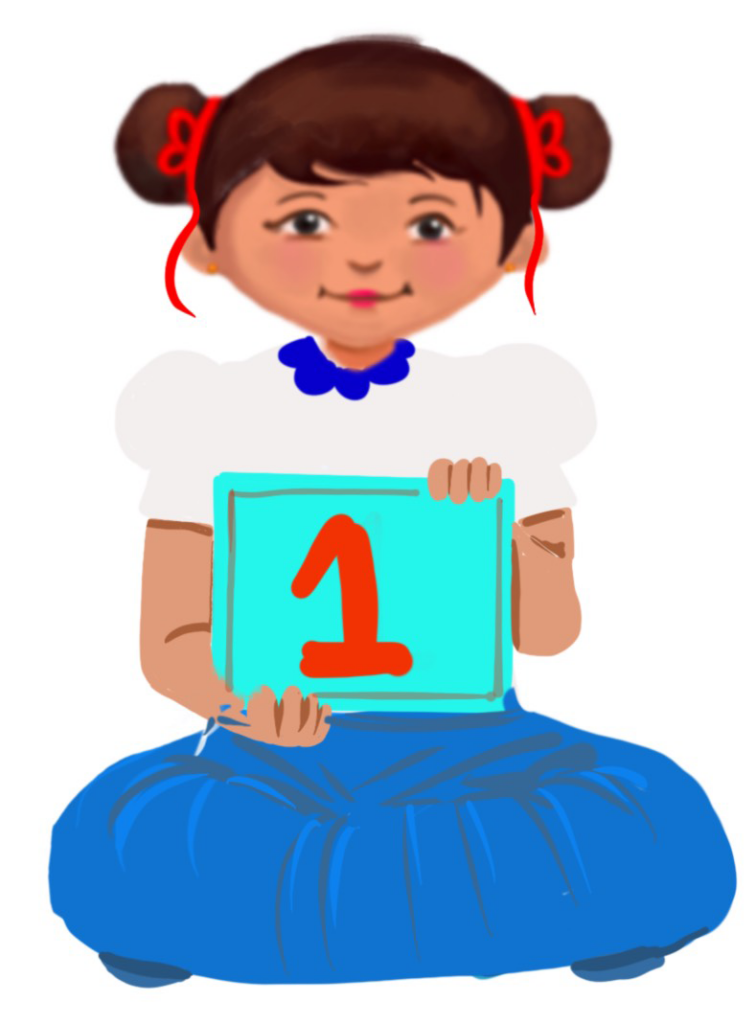
Colouring Tear and Paste Brinjal
Class 1
 Objective
Objective
Students will be able to tear the paper into small pieces and paste them in the desired shape.
 Prerequisites
Prerequisites
1) Fine motor skills: Students should have developed the ability to use their thumb and index finger to tear the paper or hold a glue stick.
2) Hand eye coordination: Students need to have coordination between their vision and hand movements to accurately tear the paper and paste in the desired shape.
3) Hand strength: Students need to have sufficient strength in their hands to tear the paper or squeeze the glue stick.
4) Bilateral coordination: Students need to have coordination between both the hands to hold paper steadily with one hand while tearing it with the other or applying glue.
5) Visual perception: Students need to have the ability to discriminate between different shapes and sizes of paper and understand the spatial relationships when arranging torn pieces onto a surface.
6) Following simple instructions: Students should be able to understand and follow simple instructions. Use clear and concise language.
NOTE: Adaptations, Variation in Rules and Pace are suggested below to develop the above prerequisites.
 Goal
Goal
All
All children can tear and paste themselves or with peer help or teachers help.
Some
Some children can tear and paste to complete the figure.
Few
Few children can tear and paste within the outline of the figure without any gaps neatly
Operational Definition
All – This gives the goal, which is the minimum that the teacher must achieve for all students in the classroom.
Some – This gives the goal that the teacher may try to achieve for some students in the classroom who can achieve the suggested goal over and above the goal stated for ‘All’.
Few – This gives the goal that the teacher may try to achieve for a few students in the classroom who can achieve the suggested goal over and above the goal stated for ‘Some’ and ‘All’.
Materials Required for Activity
Purple coloured craft/velvet paper, glue for sticking and green crayon.
Preparation for Activity
Preparing will help you to conduct an effective activity in an inclusive classroom and achieve the goal.
- Download the craft worksheet Tear and Paste-Brinjal provided with this.
- Please ensure that all children have the worksheet ready.
- Please keep ready the Adapted Worksheet as required for your Inclusive Classroom. Details of creating these adaptations yourself is provided below.
- Go through the suggestions provided for Variation of Rules and Pace and Adaptations and ensure necessary preparation accordingly.
Preparing will help you to conduct an effective activity in an inclusive classroom and achieve the goal.
Setting for the Activity
This is a classroom activity. All children can work on the worksheets individually. However, children who need peer support can work with their peers.
Procedure
- Teacher may first show the purple coloured craft paper that will be used in this activity, green crayon and the glue to be used.
- Ask the children to identify the colour and the vegetable.
- Encourage and appreciate the children for their answers.
- Demonstrate how to tear the craft paper into small bits.
- Demonstrate how to spread the glue inside the figure.
- Demonstrate how these pieces have to be pasted one after the other inside the Brinjal, filling the area completely.
Worksheet A4: Tear and paste Brinjal
View and DownloadEnlarged Worksheet: Tear and paste Brinjal
View and DownloadFlashcards: Colour Flashcards
View and DownloadClick and watch the videos. These videos are to be shown to children before the activity. When there are children with hearing impairment in the inclusive class, use the video with Indian Sign Language (ISL)
Video: Tear and paste Brinjal
ISL Video: Tear and paste Brinjal
Notes to the Teacher
- Encourage and appreciate the children for their answers.
- Go around the class and ensure that the children are following the instructions correctly at each step.
- The teacher should identify the Hand dominance of the child and encourage the child to do with that hand
- Appreciate and acknowledge children’s effort.
Adaptations to address variability in an inclusive classroom
The variability of an inclusive environment needs to address the processing and attention differences among learners. An inclusive environment may include learners with visual impairments, hearing impairments, locomotor impairments and cognitive differences. Learners not only learn in different ways, but also possess unique motivations, interests, personalities and strengths. To address this variability, providing appropriate adaptations is an effective solution.
Adaptations and Strategies: Paper Craft
Suggested Variation in Rules and Pace
When working with special children, it is important to adapt the rules and pace to their specific needs. Here are some suggestions:
- Vary the rules: Depending on the child’s abilities, you can adapt the rules for craft. For example, if a child has difficulty staying within the lines, you could allow them to paste freely or with a larger outline.
- Vary the pace: Some children may need more time to complete tasks than others. It may be helpful to break up the task into smaller parts, providing regular breaks or alternate activities to avoid frustration or fatigue. A timer can be used to help children pace themselves and feel a sense of accomplishment as they work towards completing the task.
- Provide additional support: For children with fine motor difficulties, you can offer adaptive tools such as textured or soft paper, scissors with comfortable grips and non-toxic glue with minimal odour. A reference for these adaptive tools is provided in the Adaptations and Strategies Document.
- Provide positive feedback: It is important to provide positive feedback throughout the craft activity to build the child’s confidence and motivation. Be specific and provide feedback on their effort, progress, and the quality of their work.
Story – Eat all Vegetables
Children can view the video of the story on Brinjal. Teacher can reinforce the importance of eating all vegetables without a fuss.
Video: Eat all Vegetables
ISL Video: Eat all Vegetables
Social Narrative – Making Craft
A social narrative is a tool used to help individuals with special needs, particularly those on the autism spectrum, better understand social situations and how to appropriately respond to them. Here is a social narrative about making craft items. The videos can be shown in an inclusive classroom.
Social Narrative (Coming Soon-2)
Click to access Social Narrative
Teacher Resource Document
View and Download| Source and Attribution of images All images used in the above Assets and Aids are originally created. |
This digital material has been developed by the Sri Sathya Sai Vidya Vahini Inclusive Education Project, a unit of Sri Sathya Sai Central Trust, Prasanthi Nilayam, as a collaborative offering in the service of our nation.
